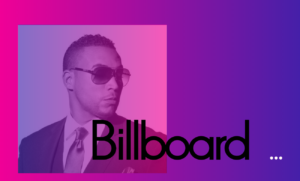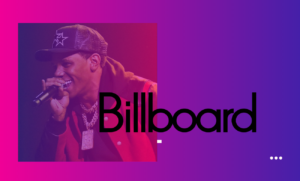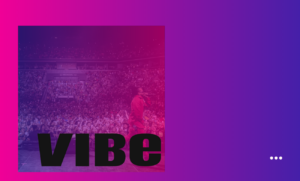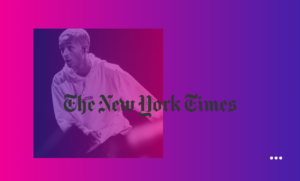2020 is the year when the majority of all Americans under seventeen years old will be from a minority background, a process that will culminate with a so-called “minority-majority” population by the mid-2040s. These demographic changes will bring about a significant transformation to Corporate America, and during the next few months I will discuss some of these consequences in each article targeting one specific area of our business environment.

GETTY
This month’s article is about the impact the shift towards minority-majority will have on music and, more importantly, on how music can be an asset for building brands and businesses in years to come.
Exhibit One: Earlier this month, we had another edition of the Super Bowl in Miami. It featured an all-Latinx line up for the first time. With the iconic J. Lo and Shakira headlining this year’s biggest concert, an estimated 103 million viewers tuned in, 4% over last year’s Maroon 5 performance.
Exhibit Two: Popular K-Pop band, BTS, ended 2019 with three No. 1 hits in the U.S., and four top 10 hits on the prestigious Billboard 200 chart.
Exhibit Three: J Balvin’s megahit “Mi Gente” was remixed by Beyoncé. That move brought her closer to her Latinx fans and brought Latinx music closer to non-Hispanic audiences, similar to when Justin Bieber remixed Luis Fonsi and Daddy Yankee’s “Despacito” in 2017. Both examples illustrate a trend towards “reverse partnerships” with mainstream artists looking for in-culture and in-language collaborations with Latinx artists.
The list of exhibits could go on and on. Music has long been at the forefront of setting trends in our society, with a strong track record for giving minorities a voice.
Here are some thought starters of how the minority-majority transformation can impact the music business in the years to come:
Native vs. Imported
Minority artists will continue to discover and fall in love with artists and rhythms that come from the countries and regions associated with their cultural background. However, we believe that given the demographic changes in America, we will start to see a steady growth of artists bringing a home-grown, bi-cultural perspective to their work. Hence, the next few years may see the birth of native versions of K-Pop emerging as Korean American artists born and raised in the U.S. create more songs that reflect their bi-cultural experience.
Another trend that we anticipate is the creation of the reverse “Spanglish” songs by Latinx American artists. While I believe we will witness a significant number of Latinx artists singing in English, we also expect to see songs to be created in Spanish with some English incorporated into them vs. English songs that have a bit of Spanish thrown in.
I spoke with Melissa Giles, Founder of Soulfrito an Urban Latin Music Festival and Culture Strategy Group, who pointed out that while U.S.-born Latinx may be bi-lingual, they also have grown up listening to mainstream Hip Hop, R&B, POP, and other music genres outside of Latin:
“There is a ton of Latino talent here in the U.S. that are making music other than Latin or Spanish Language. The music industry both on the Latin and General market side has just barely scratched the surface with tapping U.S. born Latino talent who are pulling from various influences outside of Latin music.”
Audio Revolution
In an age when technology seems to disrupt traditional media every day, the amazing resilience of radio is a story that needs to be underlined. Radio has not only stayed relevant over the past few years but in many markets, it has grown. Latino music has been one of the drivers of the medium’s strong performance.
Despite its strength, the audio business is not immune to disruption. Services like Pandora and Spotify will become even more popular, and they will continue to leverage increasingly culturally sensitive A.I. technology. Those algorithms will help preserve unique cultural preferences for some groups. At the same time, they will introduce new musical choices to a broader share of the population.
For more information, check out my colleague Jeff Benjamin’s Forbes August/2019 article “Latin Artists Took Over Spotify’s Most-Streamed Songs of the Summer Around the World.”
A Smarter Sponsor
For marketers, the cost of partnering with the most popular music artists will only grow in the years to come, forcing brands to find alternative strategies to leverage music as a way to connect with consumers.
This may require a combination of better curation skills, searching for and identifying talent that fits a brand’s strategy before they become too expensive to partner with, as well as the ability to look at music from a different angle, leaving the traditional sponsorship paradigms behind and adopting a more modern partnership approach with the artists.
I spoke about this with Jesus Gonzalez, Senior Vice President Brands and Partnerships at Universal Music Latin Entertainment, who said:
“Brands that invest the time and effort to properly research and curate their Latin music partnerships will truly benefit from building genuine equity with emerging as well as established talent and brand affinity with their fans and consumers. Nothing is worse than a shiny-object syndrome.”
New Channels
Almost a year ago, more than ten million fans “watched” a live performance of EDM’s artist Marshmello. What made his performance unique was the fact that it was not something fans could attend in person, nor was it broadcast on Network TV, Cable, YouTube, or any other video streaming services. The performance was available exclusively for Fortnite players while in the game.
This new way to experience music is paradigm-breaking beyond brand sponsorship. For young music consumers whose first concert was brought to them by one of their favorite brands, at zero cost, without ever leaving their screens, the bar for brand integration has officially been set.
We believe that the demographic shift in America will accelerate the convergence of music, gaming, and technology because minority youth over-indexes when it comes to video game usage, and music consumption and are eager to adopt technology as early as possible.
The above combination will open new and different ways for music to be consumed and distributed, significantly enhancing access to new artists and minority voices.
Music has been one of the most visible aspects of the multicultural diversity in our country for decades. As we experience an acceleration of our demographic diversity, brands will need to pay closer attention to how minority consumers influence and shape culture as a way to move up the charts when it comes to relevancy. And advertisers should be all ears!




